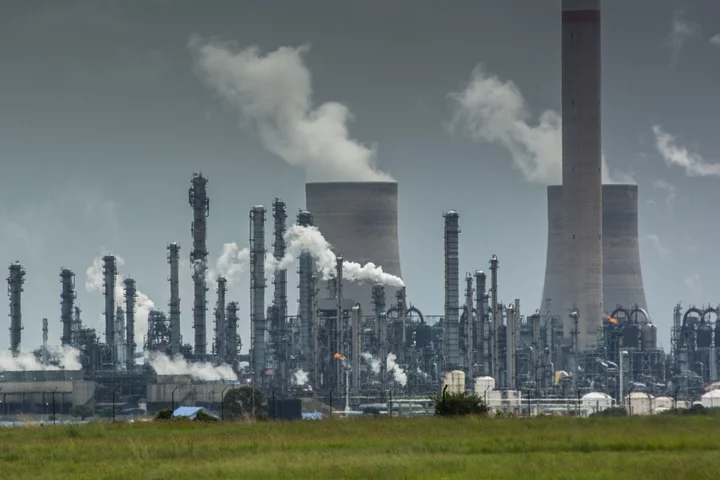Sasol Ltd. was castigated by South Africa’s national air quality officer for failing to cut pollution as its bid for an exemption to sulfur dioxide emission limits at a giant petrochemical complex was denied.
The exemption at the Secunda plant was refused because Sasol hadn’t demonstrated an effort to curb emissions of the toxin, is already benefiting from a 10-year postponement and is breaching legal levels for other pollutants, Patience Gwaze said in her decision. The decision was sent to South Africa’s biggest company by revenue on July 11 and seen by Bloomberg.
The company, which generates the pollutant from its 17 coal-fired boilers at Secunda in eastern South Africa, was granted a one-time exemption from limits for a decade in 2015 and is expected to comply with new maximum levels as of April 1, 2025.
Sasol and state power utility Eskom Holdings SOC Ltd. are the country’s two biggest sources of sulfur dioxide, which has been tied to acid rain, respiratory disease, heart attacks and strokes. The areas in which they operate their coal-fired plants have some of the world’s worst air pollution. The government was last year ordered by the High Court to compel the two companies to comply with pollution regulations.
“Sasol Secunda has failed to demonstrate steam plant’s previous reduction, measures and direct investments implemented towards compliance” with sulfur dioxide limits, Gwaze said in her ruling. Referring to the one-time postponement already granted to Sasol, Gwaze said “to permit such indulgence into perpetuity would defeat the objective” of pollution limits.
Sasol is also in breach of limits for nitrogen oxides and particulate matter emissions and had been granted an exemption for those pollutants, Gwaze noted.
The company, South Africa’s biggest by revenue, had applied to have its sulfur dioxide emissions measured in terms of the total tonnage emitted over a period of time rather than the industry standard of concentration of the toxin.
Sasol, which is appealing the decision, has a different interpretation of the requirements of the law to the air quality officer, spokesman Alex Anderson said in a response to queries. He declined to comment beyond a statement on Wednesday noting that its bid had been rejected. In that Sasol said it complied with most emission limits and has spent 7 billion rand ($391 million) curbing pollution over the last five years.
‘Your Lungs’
“Sasol wanted an average” with periods of very concentrated emissions, Eugene Cairncross, a professor emeritus in chemical engineering at the Cape Peninsula University of Technology in Cape Town, said in an interview. “Your lungs don’t operate in that way, you breathe every few seconds. What they had proposed represented a significant slackening of the limit.”
The most effective way of cutting sulfur-dioxide pollution is through the installation of flue-gas desulfurization units that both Sasol and Eskom have previously said could cost billions of dollars to install and would need significant supplies of lime and water.
For the fiscal year through June 2022, Secunda produced 137,300 tons of sulfur oxides and 49.2 million tons of climate warming carbon dioxide, or its equivalent, according to the company’s sustainability report. That’s more greenhouse gases than either Norway or Portugal. Sulfur dioxide, which is produced alongside greenhouse gases, doesn’t warm the planet.
Secunda is the eighth-biggest source of sulfur dioxide in South Africa after seven coal-fired power plants owned by Eskom.

